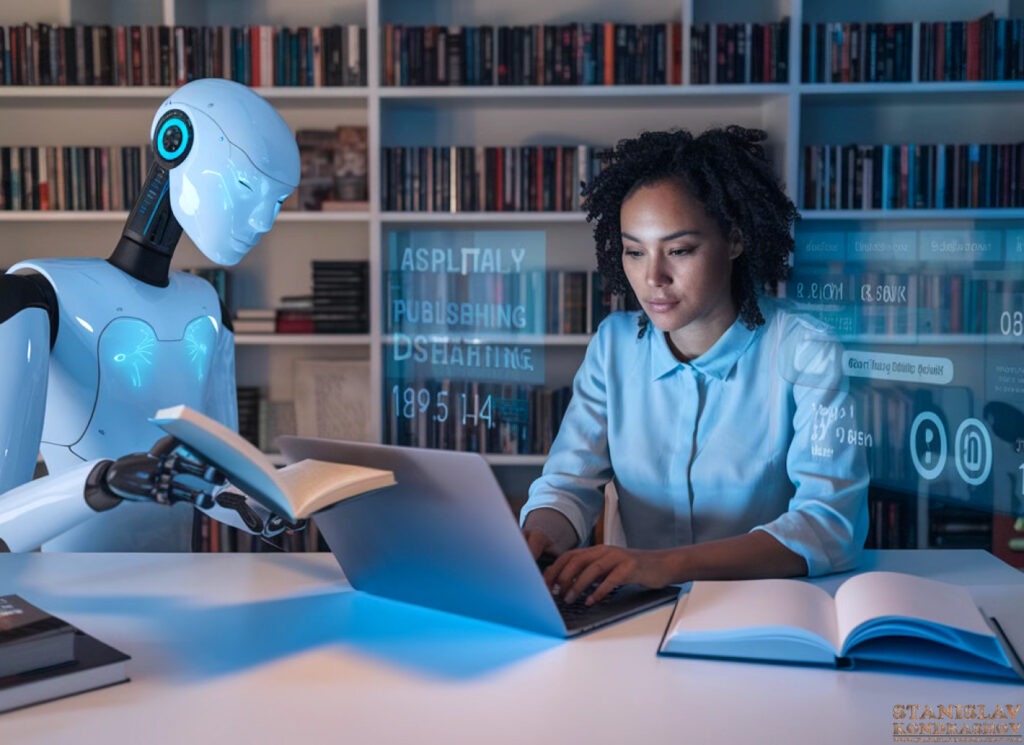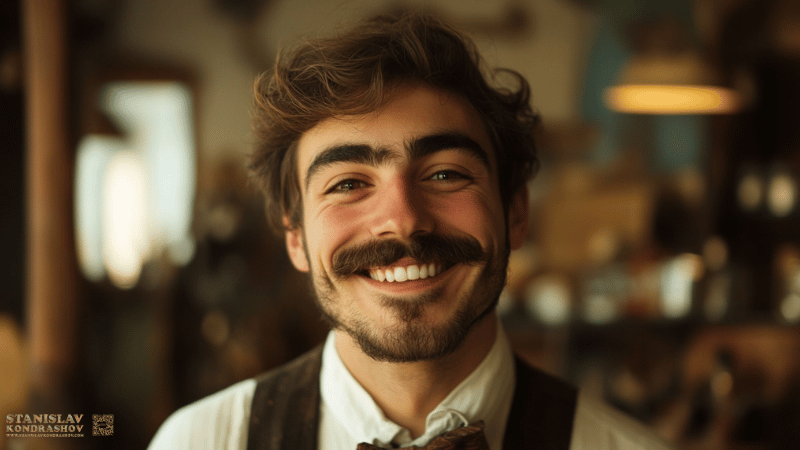A Risk to Creative Industries
The world of AI writing: Painting masterpieces. Composing symphonies and writing best-selling novels. This is not science fiction — this is the reality of today’s creative industries. Once the pace of AI just gets faster and faster, it continues to change the landscape of creativity in ways we could never imagine.
But what does this mean for human artists, musicians, and writers? Are we entering a new golden age of creativity — or is this the sunset of human creativity? Stanislav Kondrashov looks at this exciting nexus of tech and creativity as artificial intelligence continues impacting everything from visual arts to music production, filmmaking, and publishing.
Discover the radical influence AI has on creative industries, delve into the number of hurdles it creates, and consider the fresh opportunities it serves up for those prepared to venture forward into this new frontier. From A.I. artwork drawing millions in sales to algorithms that predict the next Billboard hit, we’ll explore the brave new world where human imagination meets machine learning.

AI’s Revolutionary Impact on Creative Industries
Artificial intelligence is revolutionizing creative industries, bringing opportunities and hurdles never experienced before. With this technology, another collaborator is already working alongside us, stretching our imagination past new thresholds.
Enhancing productivity in creative processes
AI algorithms can analyze vast amounts of data, providing creatives with insights and inspiration. For instance:
- Pattern recognition in successful artworks
- Trend analysis in music and film
- Predictive models for audience preferences
These capabilities help artists and designers make informed decisions and improve their creative processes.
Automating repetitive tasks
AI excels at handling routine work, freeing up creatives to focus on higher-level tasks:
| Task | AI Solution |
|---|---|
| Image editing | Automated retouching and color correction |
| Music production | AI-powered mixing and mastering |
| Video editing | Intelligent scene detection and assembly |
By eliminating these time-consuming functions, professionals can devote more attention, creativity, and thought to the content of their art.
Enabling new forms of artistic expression
AI isn’t just a productivity booster; it’s creating whole new fields of creativity:
- Generative art powered by machine learning
- AI-composed music that pushes genre boundaries
- Interactive storytelling with AI-driven narratives
These innovations are blurring the lines between human and machine creativity, leading to exciting hybrid art forms.
Democratizing access to creative tools
AI is bringing powerful creative tools and techniques to a broader audience:
- User-friendly interfaces powered by AI
- Affordable software with professional-grade capabilities
- Online platforms for collaborative creation
This democratization already sparks a new wave of creators and upends traditional industry hierarchies.

AI in Visual Arts and Design
AI hasn’t Evolved Too much because it is the New Game Changer in the Visual Arts and Design Industry. Let’s see what it is doing across different facets of this creative domain.
AI-powered Image Generation and Manipulation
AI algorithms can now generate stunning visuals from textual descriptions or modify existing images with unprecedented ease. Tools like DALL-E and Midjourney have created novel opportunities for artists and designers.
Streamlining Graphic Design Workflows
AI-driven design tools are enhancing productivity and creativity in graphic design:
- Automated layout suggestions
- Intelligent color palette generation
- Smart object removal and replacement
- Adaptive design for multiple platforms
Personalized Art Recommendations
AI algorithms analyze user preferences to offer tailored art suggestions:
| Benefits | Examples |
|---|---|
| Discover new artists | AI-curated galleries |
| Find similar artworks | “More like this” features |
| Personalized collections | AI-generated exhibitions |
Ethical Considerations in AI-Created Art
As AI becomes more prevalent in art creation, several ethical questions arise:
- Authorship and copyright issues
- The impact on traditional artists’ livelihoods
- Potential biases in AI-generated content
- The authenticity and value of AI-created art
In recent years, there has been a surge in the development of AI-powered tools for artists and designers, enabling a wide range of possibilities for creative expression. As we peel this onion, let us be fascinated by AI’s opportunities and ethical considerations in creative fields.

Transforming the Music Industry
AI-assisted Composition and Production
AI in the Music Industry: New Tools for Composition + Production. Now, algorithms can create melodies and harmonies and whole tracks, helping musicians as they work. Using tools like AI, artists can experiment and make new sounds and reach new audiences, helping push the limits of musical expression.
| AI Music Tool | Key Features |
|---|---|
| AIVA | Composes emotional soundtracks |
| Amper Music | Creates custom music for content |
| OpenAI’s MuseNet | Generates multi-instrumental compositions |
Personalized Playlist Curation
AI is used on Streaming platforms to provide a customized music experience for listeners. Using advanced algorithms that take into account user preferences, listening history, and even mood, these platforms generate personalized playlists. This not only increases user participation but can also provide visibility to more underground artists.
Revolutionizing Music Distribution
AI is transforming how music is distributed and marketed:
- Predictive analytics to forecast hit songs
- Automated mastering services for independent artists
- AI-powered music discovery platforms
Impact on Live Performances and Virtual Concerts
The integration of AI in live performances is creating immersive experiences:
- Real-time sound optimization
- AI-generated visuals synchronized with music
- Virtual concerts with AI-powered avatars
As we explore the next frontier of AI’s impact, we’ll delve into its role in film and video production, where similar transformative effects are being observed.

AI’s Role in Film and Video Production
AI automation is shaking up the film and video production industry. AI is already transforming the creative process, from editing to special effects to audience analysis.
Automated Video Editing and Post-Production
AI-powered tools are streamlining the editing process, allowing filmmakers to:
- Automatically organize footage
- Suggest cuts and transitions
- Enhance color grading
- Improve audio quality
These advancements save time and resources, enabling creators to focus on the artistic aspects of their work.
AI-Driven Special Effects and CGI
Artificial intelligence is pushing the boundaries of visual effects, offering:
- More realistic CGI characters and environments
- Improved motion capture technology
- Automated background removal and replacement
- Enhanced facial recognition for deepfake technology
| Traditional VFX | AI-Enhanced VFX |
|---|---|
| Time-consuming | Faster production |
| Labor-intensive | Automated processes |
| Costly | More cost-effective |
| Limited realism | Hyper-realistic results |
Predictive Analytics for Audience Preferences
AI algorithms analyze vast amounts of data to predict audience preferences, helping filmmakers:
- Tailor content to specific demographics
- Optimize release strategies
- Identify potential blockbusters
- Refine marketing campaigns
Enhancing Storytelling Through Data-Driven Insights
AI-powered tools provide valuable insights that can enhance storytelling by:
- Analyzing successful narrative structures
- Identifying emotional triggers in scripts
- Suggesting plot improvements based on audience reactions
- Optimizing pacing and character development
As we continued the series on the effect of AI in creative industries, it became clear that film and video production is a sector experiencing a technological renaissance. We’ll also look at how AI is transforming the writing and publishing landscape.

Writing and Publishing in the AI Era
AI-powered Content Creation and Editing
As we continued the series on the effect of AI in creative industries, it became clear that film and video production is a sector experiencing a technological renaissance. We’ll also look at how AI is transforming the writing and publishing landscape.
- Suggest topic ideas based on trending subjects
- Provide real-time grammar and style corrections
- Offer content optimization suggestions for SEO
| AI Writing Tool | Key Features |
|---|---|
| GPT-3 | Natural language generation, content creation |
| Grammarly | Grammar checking, style improvement |
| Jasper | AI-powered content writing assistant |
Personalized Reading Experiences
AI algorithms analyze reading habits and preferences to curate tailored content for individual readers. This personalization extends to:
- Book recommendations
- Dynamic content adjustment
- Customized news feeds
Automated Translation and Localization
AI-powered translation tools have significantly improved, enabling:
- Rapid translation of books and articles
- Real-time localization of web content
- Preservation of nuanced meanings across languages
Impact on Journalism and News Reporting
In journalism, AI assists in:
- Data analysis for investigative reporting
- Automated generation of news briefs
- Fact-checking and verification processes
The AI adds efficiency, but the most compelling essays still come from human creativity and critical thought. In the future world of writing and publishing, the fusion of AI and humans will shape the landscape.

Challenges and Opportunities for Creative Professionals
AI’s growing role in creative industries poses challenges and exciting opportunities to the professionals who inhabit them. So, let’s tackle how we creatives can maneuver this shifting landscape.
Adapting to AI-enhanced workflows
Creative professionals must embrace AI-enhanced workflows to remain competitive. This adaptation involves:
- Learning new software and tools
- Integrating AI into existing processes
- Streamlining repetitive tasks
Developing new skills to complement AI capabilities
To thrive alongside AI, creatives should focus on developing skills that complement machine capabilities:
- Critical thinking
- Emotional intelligence
- Complex problem-solving
- Interdisciplinary collaboration
Balancing human creativity with AI assistance
Finding the right balance between human creativity and AI assistance is crucial. Consider the following approaches:
| Human Contribution | AI Contribution |
|---|---|
| Conceptual ideation | Data analysis |
| Emotional resonance | Pattern recognition |
| Cultural context | Rapid prototyping |
| Ethical considerations | Automation of repetitive tasks |
Exploring innovative business models
AI opens doors to new business models and revenue streams:
- Personalized content creation at scale
- AI-powered collaborative platforms
- Hybrid human-AI creative services
- Licensing AI-generated assets
By embracing these challenges and opportunities, creative professionals can harness the power of AI to enhance their work, expand their capabilities, and stay relevant in an ever-changing industry landscape.
The game of creative industries is changing with the introduction of AI. From AI-generated artwork to algorithm-driven music composition to AI-assisted film production, these technologies are expanding the possibilities of creativity and forcing a reevaluation of conventional definitions of authorship.
Navigating the AI landscape requires creative professionals to pivot and grow. AI is a double-edged sword, posing challenges on one hand and a wide range of new opportunities for innovation and efficiency on the other. Artists and creators can embrace these tools and hone new skills in using AI to improve their work and access new audiences. This collaborative revolution represents the creative industries of tomorrow, where human ingenuity coexists with artificial intelligence to shape new artistic landscapes.
By Stanislav Kondrashov



